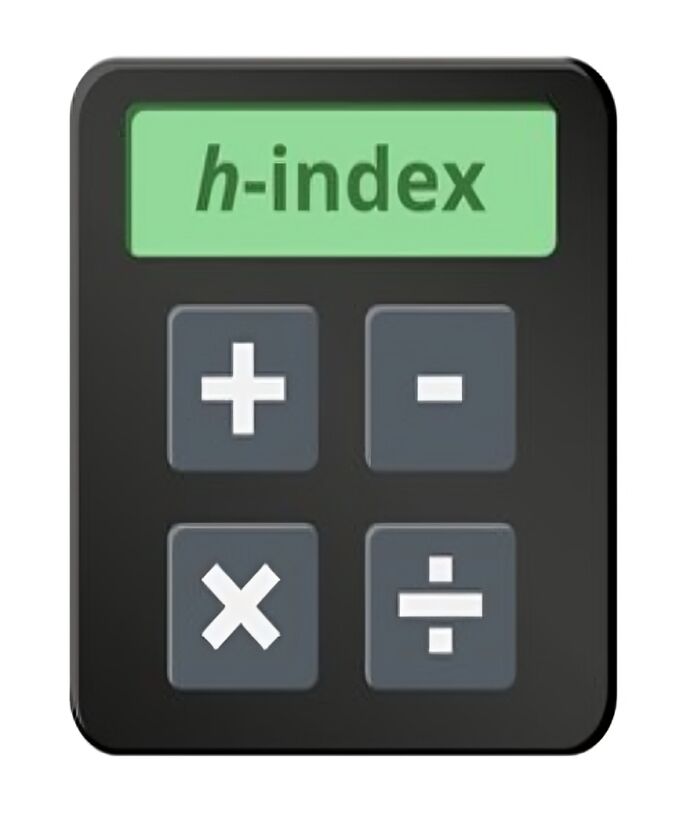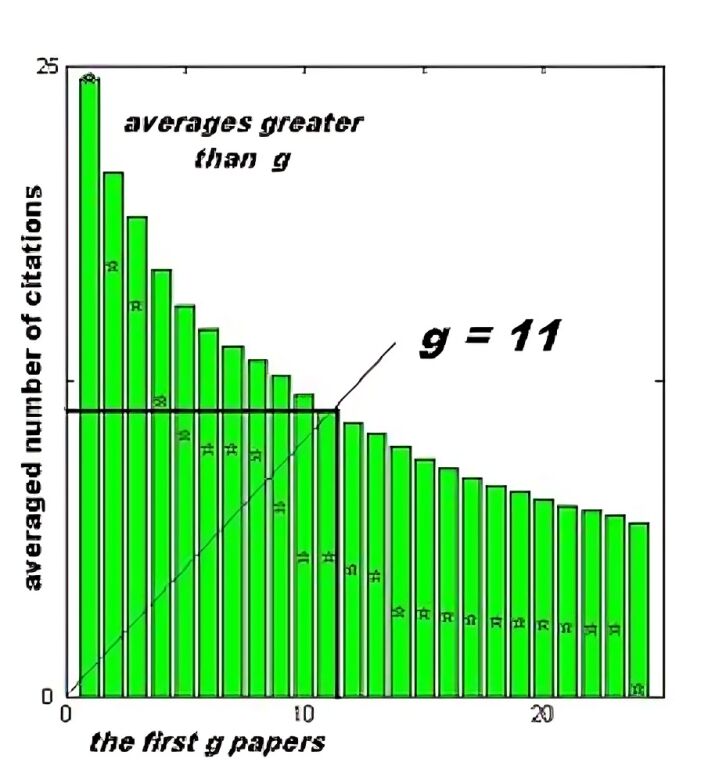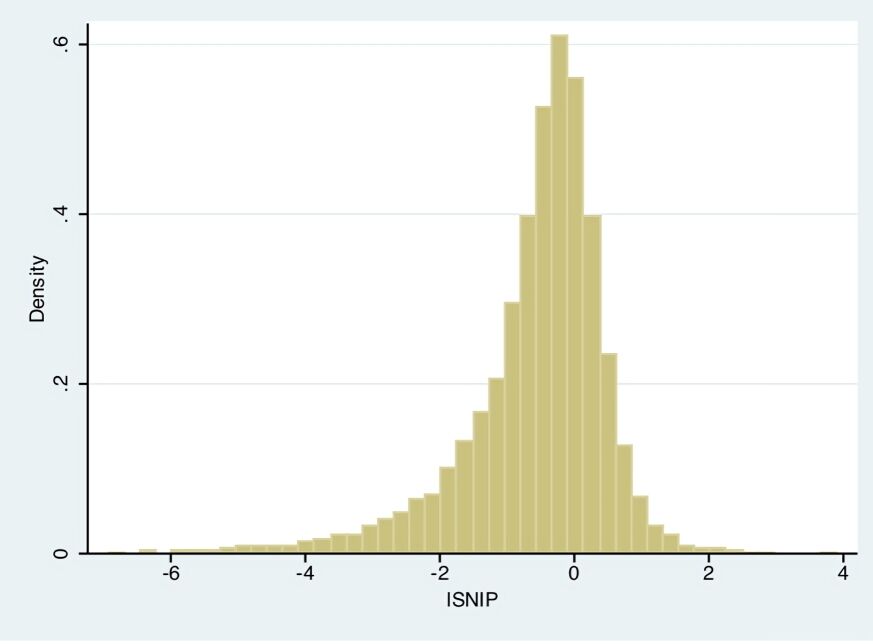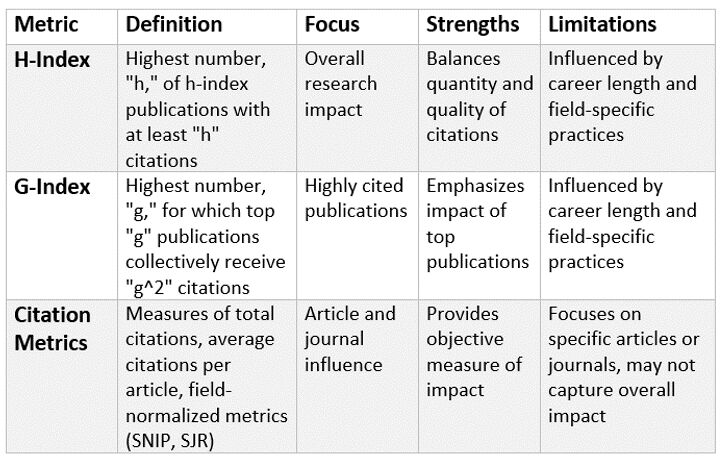Which Metric is Important? H-Index, G-Index, and Citation Metrics


The H-index, proposed by physicist Jorge E. Hirsch in 2005, is a widely recognized metric that measures the impact of a researcher's work. It considers the number of publications and the number of citations those publications have received. The H-index is determined by identifying the highest number, "h," for which a researcher has "h" publications that have each received at least "h" citations. The H-index provides a balanced measure by considering the quantity and quality of citations.
The H-index is essential because it captures a researcher's overall impact and influence within their field. It helps identify researchers who have made significant contributions by publishing influential work that has been widely cited. However, it is worth noting that the H-index may have limitations, such as being influenced by the age and length of a researcher's career.

The G-index, proposed by Leo Egghe in 2006, is another metric that focuses on the distribution of citations across a researcher's publications. It represents the highest number, "g," for which the top "g" publications collectively receive "g^2" citations. The G-index seeks to overcome the limitations of the H-index by emphasizing the importance of highly cited publications.
The G-index is crucial as it provides a more nuanced perspective on a researcher's impact by giving greater weight to their most highly cited work. It highlights researchers who have produced a few highly influential publications, even if they have a smaller overall citation count. However, like the H-index, the G-index may also be affected by career length and field-specific citation practices.

In addition to the H-index and G-index, various citation metrics offer detailed insights into research impact at both the article and journal levels. These metrics include the number of total citations, average citations per article, and field-normalized metrics such as the SNIP (Source Normalized Impact per Paper) and SJR (SCImago Journal Rank). Citation metrics provide an objective measure of the influence and visibility of individual articles or journals.
Citation metrics are essential as they allow researchers to assess the impact of their work within a specific context. They help identify highly cited articles or journals that contribute to a particular field. These metrics are commonly used in evaluating publications, assessing journal quality, and comparing the influence of researchers across different disciplines.


In the realm of research evaluation, metrics such as the H-index, G-index, and citation metrics hold significant importance in quantifying research impact. The H-index provides a holistic measure of a researcher's productivity and influence, while the G-index emphasizes the impact of highly cited publications. Citation metrics offer detailed insights into the influence of individual articles and journals.
It is critical to recognize that no single metric can fully capture the multidimensional nature of research impact. Researchers, institutions, and funding agencies should consider a combination of metrics, including the specific field, the career stage, and the research context. Additionally, qualitative assessments, such as peer recognition and societal impact, should be considered alongside quantitative metrics.
Ultimately, the choice of metric depends on the research question, the purpose of evaluation, and the specific requirements of the assessment. By understanding the strengths and limitations of each metric, researchers can better navigate the complex landscape of research impact assessment and make informed decisions about their scholarly contributions.
Ready to boost your research impact?
Look no further than SITA Academy, your go-to destination for citation booster services. Our expert team understands the importance of citations in establishing your research credibility and influence. With our comprehensive and tailored approach, we help maximize the visibility and impact of your scholarly work. Whether you're an aspiring researcher or an established academic, our services are designed to elevate your citation count and enhance your research profile. Take the next step towards greater recognition and reach out to SITA Academy today for a citation boost that will propel your research forward.
If you have any questions, inquiries, or would like to learn more about our services, please don't hesitate to reach out to us. Our dedicated team is ready to assist you.